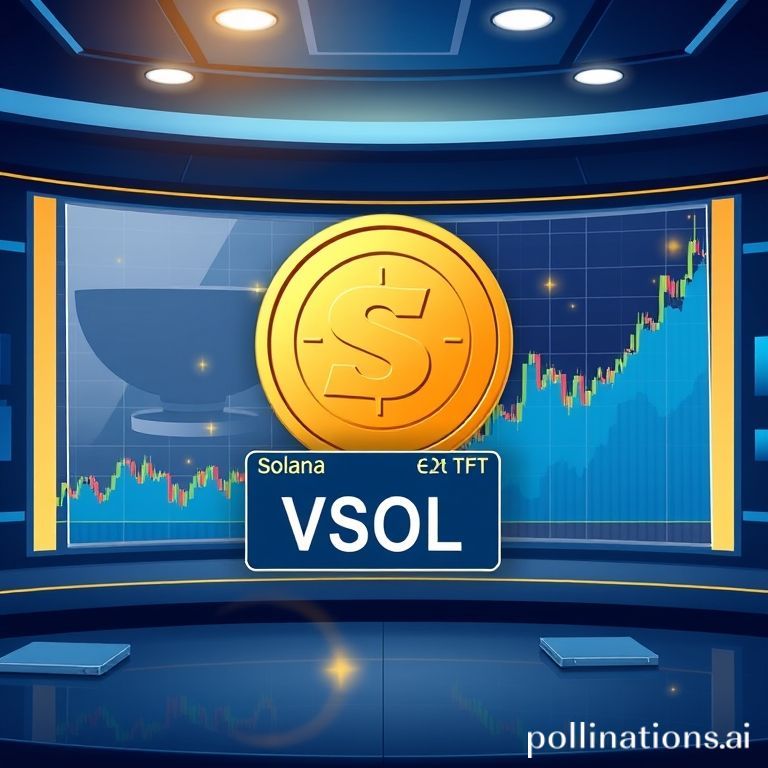Company VanEck Files Solana Staking Spot ETF (VSOL) Incorporating Staking Yield

Company VanEck submitted an updated filing for a Solana staking spot ETF (VSOL) that would hold SOL tokens, reference the MarketVector Solana Benchmark Rate, and may stake holdings through custodians like Company Gemini or Company Coinbase Custody. The product aims to combine spot exposure with staking yield, operating as a grantor trust with in-kind and cash creation/redemption mechanisms. Technical analysts point to a near-term retest around $185 and a longer-term breakout toward $360–$425 if demand reaccelerates.
Company VanEck has formally submitted an updated filing for a proposed Solana Staking ETF, a move that could materially expand institutional access to the Solana network by combining spot exposure with staking yield. The fund is expected to trade under the ticker VSOL on the Company Cboe BZX Exchange and will charge a 0.30% management fee. According to the filing, the trust will hold actual SOL tokens and use the Company MarketVector Solana Benchmark Rate as the pricing reference for daily valuations.
Structure and staking integration: Unlike many traditional investment vehicles, the planned VanEck structure will operate as a grantor trust rather than registering under the Investment Company Act of 1940, aligning it with the architecture used by other spot crypto ETFs. The sponsor, Company VanEck Digital Assets, has indicated it may stake a portion of the fund’s holdings through third-party custodial or staking providers such as Company Gemini or Company Coinbase Custody to capture additional yield where legally permissible. The filing also preserves the flexibility to incorporate liquid staking tokens (LSTs) in the future should regulatory clarity allow.
Why this matters: Integrating staking rewards into a spot ETF framework is a notable development. If approved and operationalized, this product would position Company VanEck among the first issuers to meaningfully combine spot exposure with a mechanism to capture on-chain yield within a traditional ETF wrapper. That convergence signals growing institutional confidence in Solana’s consensus, throughput, and staking economy, and could attract investors seeking both price participation and passive staking returns without managing keys or custody themselves.
Market reaction and technical outlook: Solana has pulled back recently to about $200.31, down roughly 3.7% over the past 24 hours. Analysts and on-chain commentators have provided differing technical perspectives. Mr. CryptosBatman argues the recent A-B-C corrective wave likely marked a material bottom and expects a short-term retest toward the $185 fair value gap, which corresponds with the 0.618 Fibonacci retracement. A successful bounce from that zone could confirm a higher low and potentially resume upside momentum toward the $210 region as ETF anticipation builds.
Conversely, Mr. CryptoJelleNL highlights a longer-term technical breakout: Solana appears to have escaped a year-long reaccumulation range between $120 and $200, forming a classic cup-and-handle pattern. If the market validates this breakout through a clean retest in the $185–$200 zone, renewed demand could push SOL into a multi-stage rally, with upside extension targets in the $360–$425 area when fresh price discovery resumes.
Liquidity, creation/redemption mechanics, and institutional implications: The filing emphasizes both in-kind and cash creation/redemption pathways, giving authorized participants flexibility to transact efficiently. This design aims to keep the ETF’s market price aligned with the NAV while supporting institutional-sized flows. From an allocation perspective, a staking-enabled spot ETF could lower the barriers for large asset managers, pension funds, and endowments to gain regulated exposure to Solana while capturing protocol-level rewards in a familiar investment vehicle.
Risks and open questions: Regulatory approval remains the key gating item. Additionally, the reliance on third-party staking providers and potential use of LSTs introduce operational and counterparty considerations that investors will weigh. Price volatility and network-specific risks—such as congestion, outages, or protocol changes—also remain material factors.
Conclusion: The updated filing from Company VanEck is an important signal for Solana’s evolving institutional product set. By proposing a spot Solana ETF that can integrate staking yield, the issuer is bridging on-chain economics with traditional market structures. If this ETF launches and scales, it could substantially increase capital inflows into Solana while offering a new, custody-friendly way to capture staking rewards.
Click to trade with discounted fees